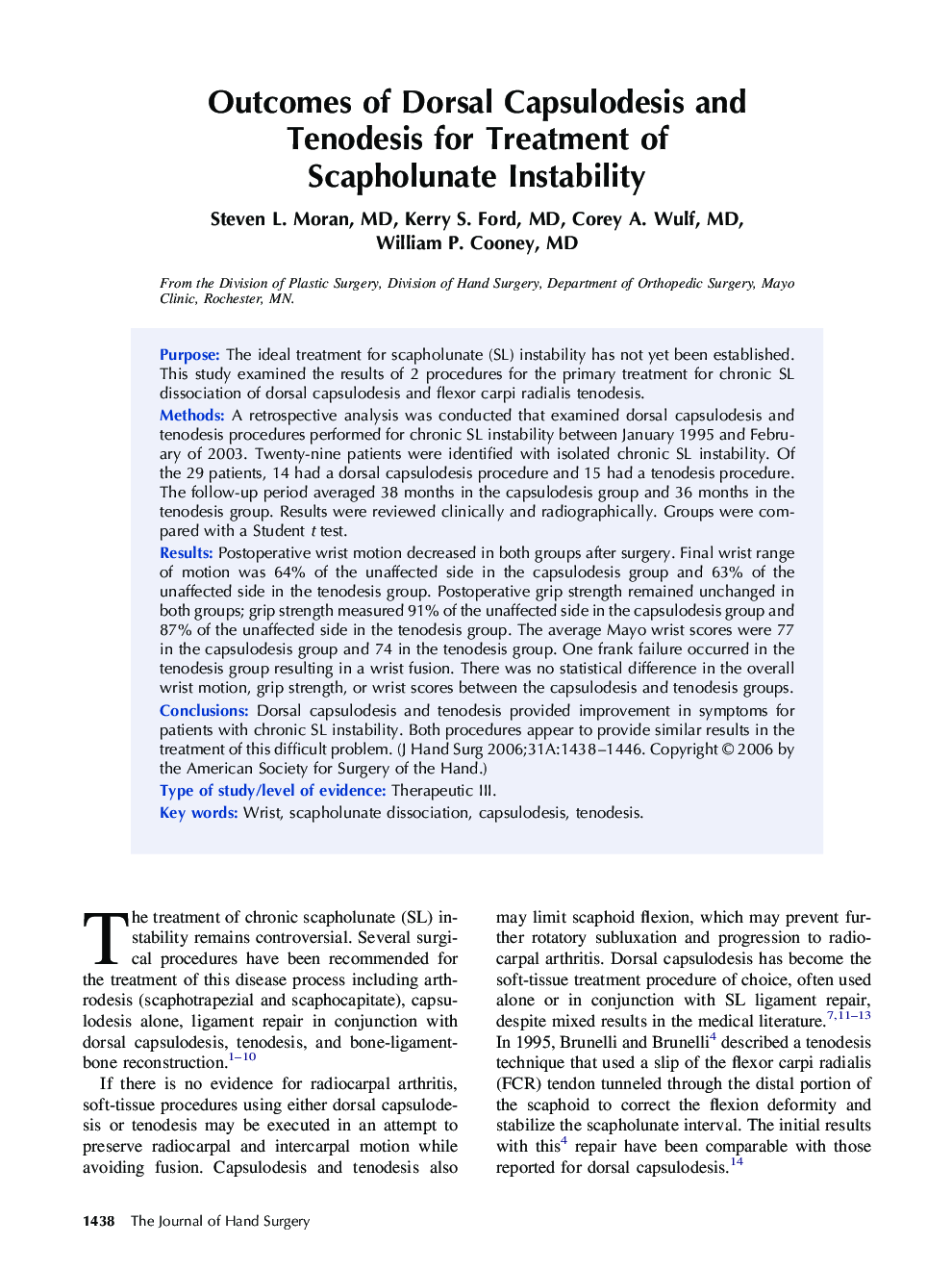| Article ID | Journal | Published Year | Pages | File Type |
|---|---|---|---|---|
| 4069126 | The Journal of Hand Surgery | 2006 | 9 Pages |
PurposeThe ideal treatment for scapholunate (SL) instability has not yet been established. This study examined the results of 2 procedures for the primary treatment for chronic SL dissociation of dorsal capsulodesis and flexor carpi radialis tenodesis.MethodsA retrospective analysis was conducted that examined dorsal capsulodesis and tenodesis procedures performed for chronic SL instability between January 1995 and February of 2003. Twenty-nine patients were identified with isolated chronic SL instability. Of the 29 patients, 14 had a dorsal capsulodesis procedure and 15 had a tenodesis procedure. The follow-up period averaged 38 months in the capsulodesis group and 36 months in the tenodesis group. Results were reviewed clinically and radiographically. Groups were compared with a Student t test.ResultsPostoperative wrist motion decreased in both groups after surgery. Final wrist range of motion was 64% of the unaffected side in the capsulodesis group and 63% of the unaffected side in the tenodesis group. Postoperative grip strength remained unchanged in both groups; grip strength measured 91% of the unaffected side in the capsulodesis group and 87% of the unaffected side in the tenodesis group. The average Mayo wrist scores were 77 in the capsulodesis group and 74 in the tenodesis group. One frank failure occurred in the tenodesis group resulting in a wrist fusion. There was no statistical difference in the overall wrist motion, grip strength, or wrist scores between the capsulodesis and tenodesis groups.ConclusionsDorsal capsulodesis and tenodesis provided improvement in symptoms for patients with chronic SL instability. Both procedures appear to provide similar results in the treatment of this difficult problem.Type of study/level of evidenceTherapeutic III.
